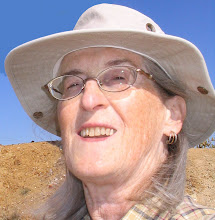It felt as though I had been working on the Old Gold Stansfield socks forever (perhaps because I had to frog the first five inches after finding a chronic oopsie on round 12). But they are done at last.
The recipient is happy with the socks, and I am pleased too. The pattern (Stansfield 196 from More Sensational Knitted Socks) is lovely. It looks a lot like cables without actually being cables. Now I want to knit a pair for myself. But not right away. Two socks worth of the same pattern, however delightful, generally leaves me ready for something new. And the constant need to be alert to the special fix needed on round 12 became irritating. (The problem was this – on round 11 there is a yarnover after a knit and before a purl. If knit in the ordinary way on the next round it leaves what looks to me like a gaping hole; others might consider it delightfully lacy. But if one knits in the back of that yarnover – no hole.)
Sooooo . . . . . it's time to focus on finishing the second Aslan Knee Sock. Sock and I went down to the harbor, found a sunny bench, and spent some quality time together. 
It's coming along nicely.



























